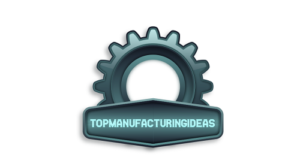In an era where food safety and preservation are paramount, Modified Atmosphere Packaging (MAP) machines have emerged as a groundbreaking solution for extending the shelf life of various food products. These cutting-edge devices are revolutionizing the way we package and store food, ensuring that it remains fresh and safe for consumption over extended periods. In this article, we will delve into the science behind MAP machines and explore how they are changing the landscape of food preservation.
Understanding MAP Machines
MAP machines, also known as gas flushing or controlled atmosphere packaging machines, are a crucial component of modern food packaging processes. At their core, MAP machines manipulate the atmosphere within a food package to inhibit the growth of microorganisms and slow down the oxidation process, which are the two primary factors responsible for food spoilage.
The Key Components
MAP machines consist of several vital components that work in tandem to create the ideal packaging environment. These components include:
- Gas Supply:MAP machines are equipped with a gas supply system that introduces a specific blend of gases into the packaging. Typical gases used in MAP include nitrogen, carbon dioxide, and oxygen. The choice of gas blend depends on the type of food being packaged and the desired shelf life.
- Sealing Mechanism:The machine effectively seals the food package after the introduction of the desired gas mixture. This seal must be airtight to maintain the modified atmosphere inside.
- Gas Analyzer:A gas analyzer is employed to measure the concentration of gases within the package. This ensures that the desired gas blend is maintained throughout the packaging process.
- Pressure Control:MAP machines also feature pressure control mechanisms to regulate the pressure inside the package, ensuring it remains at the optimal level.
The Science Behind MAP Machines
The science behind MAP machines is rooted in the understanding of how different gases affect food preservation. Each gas in the mixture serves a specific purpose:
- Nitrogen (N2):Nitrogen is an inert gas that displaces oxygen within the package. By reducing the oxygen content, nitrogen helps inhibit the growth of aerobic bacteria and slows down oxidative reactions, preventing food from spoiling due to oxidation.
- Carbon Dioxide (CO2):Carbon dioxide has antimicrobial properties and can suppress the growth of various microorganisms. It also helps maintain the freshness and color of certain foods, such as meat and produce.
- Oxygen (O2):Oxygen, although typically reduced in MAP, is still needed in small quantities for some products. It is essential for the respiration of certain fruits and vegetables, preventing them from going stale.
By carefully controlling the proportions of these gases, MAP machines create an environment where the specific needs of each food product are met, prolonging its shelf life while preserving its quality.
Benefits of MAP Machines
MAP machines offer several significant benefits:
- Extended Shelf Life:By creating an optimal atmosphere for food products, MAP machines can significantly extend their shelf life. This not only reduces food waste but also allows manufacturers to distribute their products over longer distances.
- Preservation of Quality:MAP helps maintain the freshness, texture, flavor, and color of food items. Consumers can enjoy products that taste as good as the day they were packaged.
- Enhanced Food Safety:The controlled atmosphere inside MAP packages inhibits the growth of harmful microorganisms, making food safer to consume.
- Reduced Need for Additives:With longer shelf life and improved preservation, there is a reduced need for chemical preservatives and additives in food products, making them more natural and healthier.
In conclusion, MAP machines are a testament to the progress of food science and technology in our quest to combat food spoilage and ensure the safety and quality of our food supply. Through the precise manipulation of gases and atmospheric conditions, MAP machines are extending the shelf life of various food products and revolutionizing the way we store and consume food. As we continue to advance in this field, the future of food preservation looks brighter than ever, with MAP machines playing a crucial role in reducing food waste and ensuring that the food on our tables remains safe and delicious.

